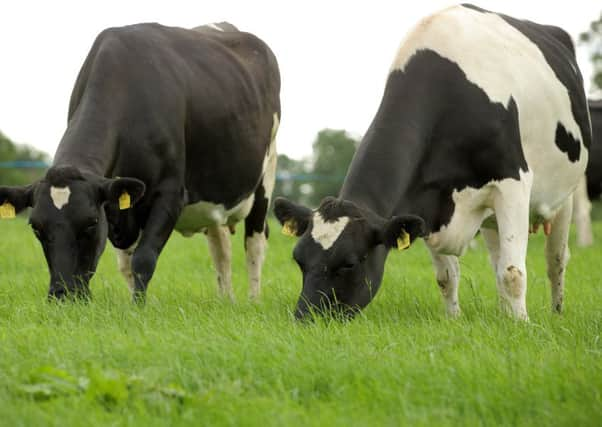Need for accurate and timely milk production data


The preferred outcome being the possibility that the UK strikes a comprehensive free trade agreement (FTA) with the EU, leading to frictionless trade. This of course would be the ultimate goal for the Northern Ireland dairy sector. In his concluding remarks, Lord Price highlighted the need for investment in research technology and science but omitted to mention the need for investment in infrastructure.
Northern Ireland milk production has risen by two per cent since the beginning of the year. This two per cent increase is a drop in the ocean in comparison to what we have seen south of the border, where milk production is up eight per cent (four times that in Northern Ireland), and is expected to hit eight billion litres this year.
Advertisement
Advertisement
Local milk production has been more subdued than what was predicted, with a significant number of beef-dairy conversions coming online. However, external factors mean that milk production has not risen as high as expected in Northern Ireland this year.
Whilst milk powder prices have increased significantly over the same period and returns remain on the up for cheeses, the unacceptably low farmgate milk price cannot be blamed on overproduction in Northern Ireland. Hence the headline in one farming paper last week, “oversupply takes shine off dairy prices” is not accurate.
It is a different matter 12 miles over the North Channel, where surplus milk and lack of available processing capacity in Scotland has been highlighted in recent weeks. The Agriculture and Horticulture Development Board (AHDB), have confirmed that Scottish processing volumes have dropped by two-point-five per cent to 1.294 billion litres in five years, with surplus volumes expected to reach 214 million litres for 2019/2020.
Whilst the AHDB have delivered up-to-date figures for Scotland, the same cannot be said for the industry here in Northern Ireland. The only data available is that compiled by DAERA and the last milk utilisation data is for 2013. Six years have passed since then and in that time, milk quotas have been abolished, we have seen three stages of the milk price cycle and the UK has voted to leave the EU.
Advertisement
Advertisement
Furthermore, when it comes to monthly milk production data, there is usually an eight-week lag in DAERA data. It is worth noting that the UFU are members of a UK-wide Milk Forecasting Forum, facilitated by the AHDB, looking at how to get more real-time milk volume data. However, requests for weekly milk flow figures has not been granted by the local industry.
Which brings us to back to dairy processing capacity here in Northern Ireland. Earlier in the autumn, Dairy Council NI released a statement voicing their concerns at the dairy processing capacity in Northern Ireland, yet the exact processing levels for the various creameries were not specified and there are no definitive figures freely available.
As we enter 2020, local processing capacity will need to be capable of handling any significant increase in milk production. But it will also need to be able to capitalise upon reaping the bounty of any FTA which may arise from favourable trade negotiations with the EU and other trading partners.
This will only be achieved by investment in infrastructure and specifically dairy processing capacity. However, I would fear that we are already on the backfoot (even before we have started), as we are currently without accurate data as to what the actual processing capacity is here in Northern Ireland.